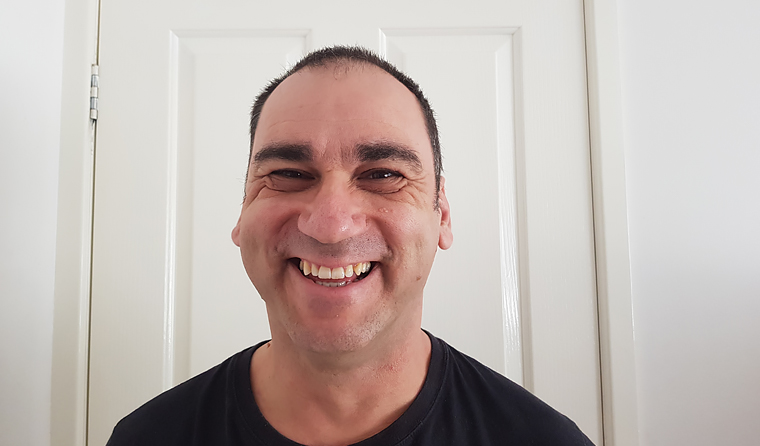News
Take your socks off at the GP’s, diabetic foot disease expert says
Diabetic foot disease costs the healthcare system $1.6 billion a year, has mortality rates worse than many cancers, and results in an amputated limb every two hours, according to Australian experts.
 Researchers say diabetic foot disease may be Australia’s least known major health problem.
Researchers say diabetic foot disease may be Australia’s least known major health problem.
‘Just take your socks off.’
That’s what Australian Diabetes Society Chief Executive, Associate Professor Sof Andrikopoulos, would like GPs to suggest to their patients with chronic diabetes.
Associate Professor Andrikopoulos told newsGP there are about 4400 amputations per year in Australia due to diabetes. Yet, diabetic foot disease is not widely publicised.
‘[There is] one amputation every two hours,’ he said.
‘The amputations are due to diabetic neuropathy, predominantly … and these are preventable. We can actually save these limbs.’
Associate Professor Andrikopoulos’s comments follow a perspective published in the Medical Journal of Australia, ‘Pathway to ending avoidable diabetes related amputations in Australia’, that calls for more action to reduce impacts of the disease.
‘Whole-foot amputations have slightly decreased, while partial amputations of the foot have increased,’ Associate Professor Andrikopoulos said.
‘We are much better at saving the foot, but we are still having this issue of partially cutting out bits of the foot that become diseased.’
High-blood sugar levels affect the nerves of patients with diabetes who develop diabetic neuropathy and they consequently don’t feel pain.
‘If you don’t feel pain, then any little pressure that you put on the foot … can lead to a wound,’ he said.
‘Diabetes is also associated with an increase in infection and if that wound becomes infected, it can lead to ulceration … [it can become] gangrenous and then you need to cut bits off.’
 Australian Diabetes Society Chief Executive, Associate Professor Sof Andrikopoulos, says there is one amputation every two hours in Australia as a result of diabetic foot disease.
Australian Diabetes Society Chief Executive, Associate Professor Sof Andrikopoulos, says there is one amputation every two hours in Australia as a result of diabetic foot disease.
Patients who develop diabetic foot disease require more consultations, referrals and hospitalisations than patients with heart disease, kidney disease or cancer. Associate Professor Andrikopoulos said patients with diabetes should ensure they have the underside of their feet checked when they visit their GP.
‘We are not very good at taking off our socks and having a good look at our feet underneath,’ Associate Professor Andrikopoulos said.
‘So what we would encourage is for people with diabetes to go to their GP … and take their socks off, annually and biannually, and for the GP to have a look at their feet. If there are any issues they need to be referred to a foot clinic.’
Associate Professor Andrikopoulos said there is a need for a coordinated, multidisciplinary approach to diagnosing, managing and treating the disease.
‘You do not only need to manage the diabetes, so you need an endocrinologist, you need a wound-care nurse, an infectious diseases person, and you also need a vascular surgeon,’ he said.
‘You need at least four to five disciplines to come together to manage diabetic foot effectively.’
Researchers say Australia has the highest diabetes-related amputation rate among Organisation for Economic Co-operation and Development (OECD) countries.
Diabetic Foot Australia has recently launched Australian diabetes-related foot disease strategy 2018–2022: The first step towards ending avoidable amputations within a generation. The strategy outlines nine key recommendations, including increasing access to care.
Dr Gary Deed, GP and Chair of the RACGP Specific Interests Diabetes network, told newsGP the report reinforces the need for GPs to regularly inspect the feet of their patients with diabetes.
‘The message to GPs is that, unless you look you will miss an at-risk foot, as some patients lack sensation and damage is done before awareness and prevention can be started,’ he said.
Dr Deed is also concerned about access to quality care for diabetes.
‘There are still gaps in service delivery in regional rural and remote areas, where the burden of detection and management falls on the GPs,’ he said. ‘Upskilling on changes in the expert management and liaison with experts through telehealth initiatives, with more government funding, will help the patients in those areas.’
amputations Australian Diabetes Society Diabetic Foot disease
newsGP weekly poll
Is it becoming more difficult to access specialist psychiatric support for patients with complex mental presentations?